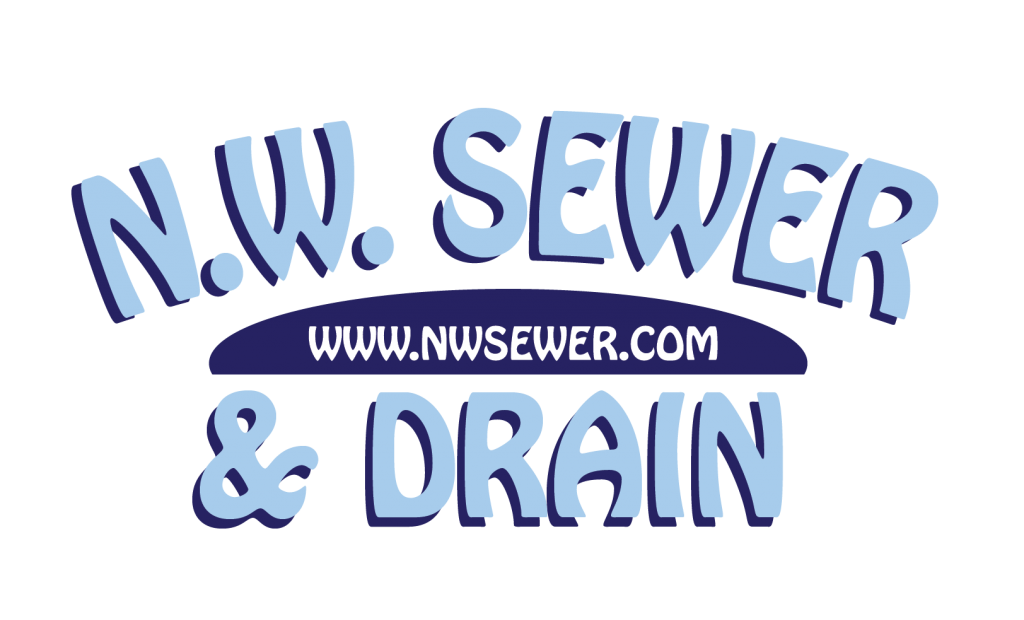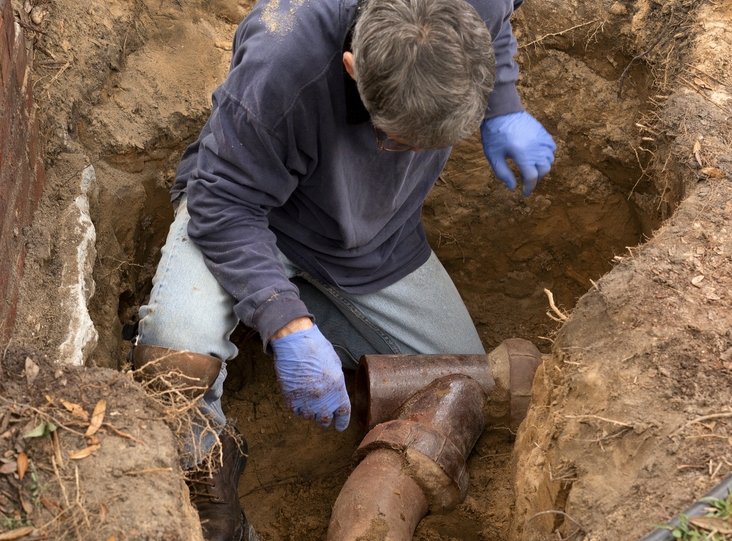Your home’s or office’s sewer lines are typically laid underground. When there’s a problem, such as a blockage in your drainage, you may sometimes need to check the inside of the sewer lines. Because you cannot see the inside of these underground pipes, you may also need to dig up your yard. That can be messy and even costly, especially when you’re unsure which section of the sewer line is faulty.
Trenchless sewer repair is a method of sewer line repair or replacement that does not involve the digging of trenches in your yard or excavation of any kind. Instead, it uses an eco-friendly method to repair or replace old or damaged pipes. Compared to several other available options, trenchless sewer repair is faster, less expensive, and non-invasive.
In this post, you’ll learn more about how the trenchless sewer repair method works, its advantages and disadvantages, as well as when to use trenchless sewer repair.
How Does Trenchless Sewer Repair Work?
Unlike traditional methods of sewer line repair that involve digging out portions of your yard, trenchless sewer repair uses a unique technology that implants a new, better drain pipe right inside the damaged one without digging out the old pipe. There are two ways this can be achieved. Therefore, trenchless sewer line repair is divided into two types: pipe bursting and cured-in-place pipe remaining.
Type of Trenchless Sewer Repair
1. Pipe bursting
The pipe bursting method forcefully opens the existing pipe using a bursting tool. The bursting tool consists of a hydraulic or pneumatic expansion head that is pulled through the old pipe using a winch and a cable. As the pneumatic head moves through the pipe, it fits a newer pipe within the existing one, and the old one is busted or fractured. This method is mainly used for sewer, rainwater, or oil gas pipelines.
As long as there is space to pull the new sewer line through, pipe bursting can be used. Note that pipe bursting involves digging two access holes on either side of the lateral sewer line.
This is where the new sewer line is passed (a pointed installation head — also known as a bursting head — is pulled along in the length of the existing pipe, replacing it in the process). Pipe bursting essentially replaces the old pipe with new high-density HDPE pipes.
2. Cured-in-Place (CIPP) Pipe Relining
Pipe relining is another method of trenchless sewer line repair that involves installing a pipe liner. Pipe relining involves inserting a resin-saturated liner into the existing pipe; hence it is also called advanced slip lining. It can be used to repair leaks or restore structural stability in old pipes.
During pipe relining, only one access hole is dug to insert the pipe liner. The flexible pipe liner, which is an inflatable tube made of resin, is pulled through the old pipe and then inflated or expanded. It solidifies and cures into place by heating the liner after a few hours.
The resin lining material coats the interior of the pipe and expands inside, and hardens to create a new pipe inside the existing one when the inflatable material is removed. Like the pipe bursting technique, you’ll have a new pipe fitted within the old one. In both cases, you don’t have to remove the old or existing pipe.
What To Know Before Using Sewer Repair
Generally, trenchless pipe repair techniques are mostly recommended as an alternative to traditional sewer pipe repair methods. It is efficient for replacing damaged or broken sewer pipes. However, you want to ensure that a trenchless repair technique is ideal before using it. This is why we usually recommend that homeowners or property managers speak with trusted drain and sewer specialists before starting.
The nature and extent of the damage are first determined using a special sewer line camera inserted into the underground sewer pipes. In some cases, trenchless pipe repair is preceded by sewer pipe cleaning methods like hydro-jetting or snaking.
This cleans out any blockage or debris obstructing wastewater flow through the pipe. Once this is completed, trenchless pipe repair may be carried out. Note that trenchless pipe repair is not advisable for all sewer pipe repair cases. If the old pipe is still substantially intact, trenchless pipe repair could be used.
Also keep in mind that both processes will reduce the diameter of the sewer pipe by about a quarter-inch; it does not affect the flow of liquid through it. And at the end of every trenchless pipe repair process, the camera is again inserted into the hole to confirm that the repair was effective and complete.
Why You Need to Hire a Professional for Trenchless Pipe Repair
The equipment used for trenchless pipe repair is sophisticated, and it takes a professional to carry out the process effectively. The process itself involves a number of moving parts that must be monitored properly to ensure a successful installation.
For instance, before using any of the techniques discussed above, you might want to check to ensure that the existing pipes are actually broken. And if there are clogs in the way of waste flow, clearing them out with hydro-jetting or drain snaking is typically recommended.
Why Trust N.W. Sewer for Your Trenchless Pipe Repair Work?
Whether you’re looking to repair the sewer pipes in your residential property or office building, you can rely on our experience and expertise at N.W. Sewer & Drain.
We have a trained and ready-to-move team on standby serving the Seattle metropolitan area, including Everett, Marysville, Arlington, Oak Harbor, Burlinton, Bellingham, Bellevue, Kirkland, Shoreline, Renton, Lake Forest Park, Mountlake Terrace, Auburn and other surrounding areas. And we have provided top-notch drain cleaning and sewer repair services in Seattle for more than 20 years.
For an effective, affordable, and timely sewer pipe repair, feel free to contact us today at N.W. Sewer & Drain at 206-931-7728 to schedule an inspection of your sewer line and pipes.
Frequently Asked Questions
1. What exactly is trenchless sewer repair?
Trenchless sewer repair is a modern technique that fixes or replaces underground pipes with minimal digging. By utilizing advanced methods like pipe bursting and cured-in-place pipe (CIPP) lining, it addresses sewer issues without the disruptive trenches associated with traditional repairs.
2. How does trenchless repair compare to traditional methods in terms of cost?
While the initial expense of trenchless repair can range between $1,900 and $6,000, it often proves more cost-effective in the long run. Traditional repairs may seem cheaper upfront but can incur additional costs due to extensive property restoration.
3. What types of problems can trenchless methods address?
Trenchless techniques are versatile, effectively tackling issues like invasive tree roots, chronic sewer clogs, corrosion, leaks, and outdated pipes. They offer a comprehensive solution to various sewer line challenges.
4. How long does a trenchless sewer repair typically take?
Most trenchless repairs are completed within a day. Factors influencing the duration include pipe length, problem complexity, and the specific method employed.
5. Is trenchless sewer repair a durable solution?
Absolutely. The materials used in trenchless repairs are designed to resist corrosion and root intrusion, ensuring longevity and reliability.
6. Are there limitations to using trenchless repair methods?
Yes, trenchless repair may not be suitable for severely collapsed pipes or situations where the existing pipe’s condition is beyond repair. A thorough inspection is essential to determine the best approach.
7. How has technology influenced trenchless sewer repair in 2025?
Technological advancements, such as UV curing for liners and sophisticated robotic systems, have enhanced the efficiency and effectiveness of trenchless methods, making them more reliable and faster.
8. What is the projected growth of the trenchless pipe rehabilitation market?
The trenchless pipe rehabilitation market is expected to grow from $4.37 billion in 2023 to $6.48 billion by 2030, reflecting a compound annual growth rate (CAGR) of 5.8%.
9. How does trenchless repair impact property aesthetics?
One of the significant advantages of trenchless repair is its minimal disruption to landscapes, driveways, and structures, preserving the property’s aesthetic appeal.
10. Is trenchless sewer repair environmentally friendly?
Yes, by reducing the need for extensive excavation and the associated debris, trenchless methods offer a more sustainable and eco-friendly approach to sewer repairs.




